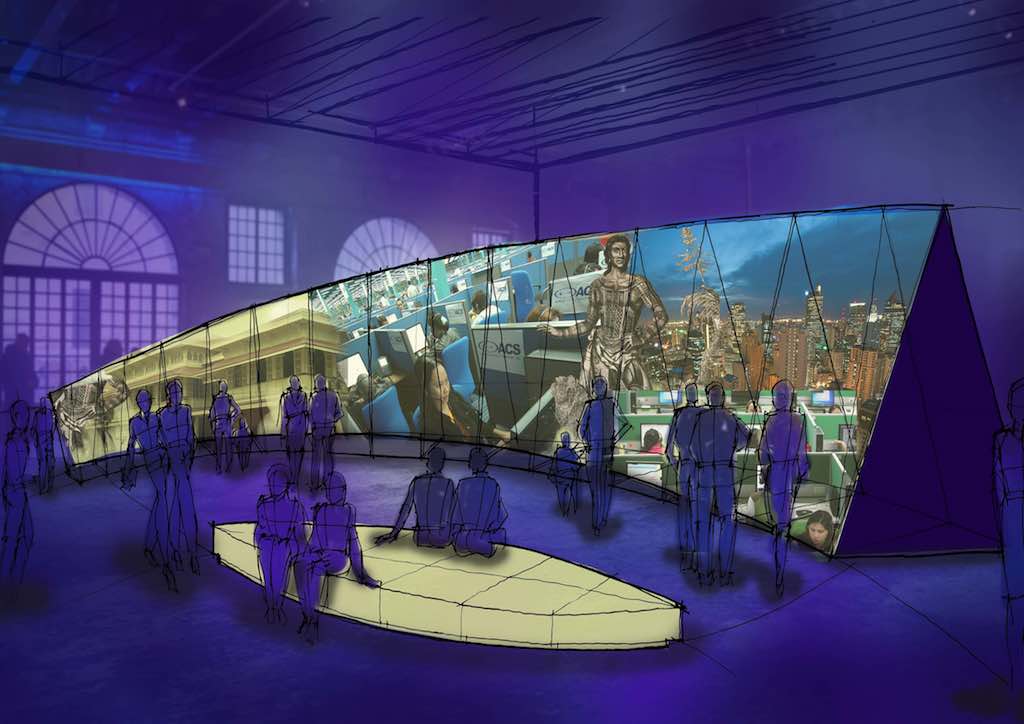The centerpiece of the Philippine participation in this year’s 16th International Architecture Exhibition of La Biennale di Venezia is a video installation mounted in the Artiglierie, Arsenale. It presents a dynamic between irregular changes of the country’s past and the challenges of constructing contemporary subjectivity. The work entitled The City Who Had Two Navels references the novel of Filipino National Artist for Literature Nick Joaquin The Woman Who Had Two Navels.
Commissioner of the Philippine Pavilion Virgilio S. Almario, who also sits as National Commission for Culture and the Arts Chairman and is himself a Filipino National Artist for Literature said, “The Philippine Pavilion places a spotlight on the discussion of how our cities have transformed, an important global conversation seeing how more than fifty per cent of the world’s population live in urban settlements.”
He explained, “It is relevant because if we can make sense of our cities and how it is shaped by our past as well as by neoliberal agendas, then learning about the presence of these invisible forces empower us to make better choices for the future of the cities and the people that occupy it.”

located at the historic exhibition space that is “the largest pre-industrial production center of the world,” that used to be the center of military, economic, and political power, but has since
become a site of commerce. Photo by Andrea D’Altoè for PAVB


Conversations with A Navel
Edson Cabalfin helms the Philippine response to the 16th Venice Architecture Biennale proposition with his curatorial concept. The City Who Had Two Navels looks beyond the built heritage of a city to the denizens of the urban setting, their souls and their environment. He examines architecture and urbanism’s ability to empower and transform people’s lives. Freespace or Pookginhawa in the Philippine context underscores the strategies by which Filipinos use the built environment as modes of resistance and appropriation to an ever-changing world.
Dr. Cabalfin highlights two “navels” that are in constant dialogue. The first invites a conversation on how colonialism impacts the built environment by presenting major expositions and world’s fairs that showcased the Philippines, including the 1887 Exposicion General de las Islas Filipinas (Madrid, Spain), the 1904 St. Louis Fair (St. Louis, Missouri, USA), the 1998 Expo Pilipino (Clark Airbase, Pampanga). Images and artifacts that present Philippine displays, which reproduced colonial narratives of the exotic and the primitive, ask if can we truly escape the colonial.
RELATED READS: The Upcoming Museum of the Academy of Motion Picture Arts & Sciences (AMPAS) is Holy Land for Cinema Lovers



The Second Navel
The second navel engages thought on how the process of neoliberalization alters the urban landscape. “Neoliberal Urbanism” presents the development of Philippine cities entrenched within processes of neoliberalization. Cities are placed in a hierarchy based on the ability to compete for capital following principles of privatization, deregulation, free market, and minimal state intervention. Examples include mixed-use developments and business process outsourcing (BPO) offices, enclave central business districts, peri-urban residential subdivisions, and informal settlements as part of urban growth. The pavilion exposes contemporary issues in the Philippine settings and asks if neoliberalization is a new form of colonialism.”
A video installation in the central part of the exhibition, explores the intersection of colonialism and neoliberalism. The quandry of these two “navels” represents an emergent wave of postcolonial anxieties arising from the process of exiting the colonial condition. Visitors to the pavilion are asked to contemplate on their own experiences with the colonial and the neoliberal. It premises that the Philippines does not exist in a vacuum and is inextricably intertwined with other nations and people.
RELATED READS: Elmer Borlongan’s Eye: A New Exhibit at the Metropolitan Museum of Manila


Expression of Self, Society and Nation
The Philippine participation at the 16th International Architecture Exhibition of La Biennale di Venezia is a collaborative undertaking of National Commission for Culture and the Arts (NCCA), the Department of Foreign Affairs (DFA), and the Office of Senator Loren Legarda. Senator Legarda, the visionary and principal proponent of the Philippine participation in the Venice Biennale, stressed the importance of the country’s presence at the Architecture Biennale.
“As an advocate of the preservation of Philippine heritage, I see architecture as a crucial element of building equitable, sustainable and inclusive societies. Through our participation in this year’s Venice Architecture Biennale, we relate our truths as we also learn from the realities of other nations. It serves as a reminder of how architecture is not only about building structures but also about inspiring life, shaping society, and building a nation,” said Legarda.
The 16th International Architecture Exhibition of La Biennale di Venezia will run from May 26 to November 25, 2018.





